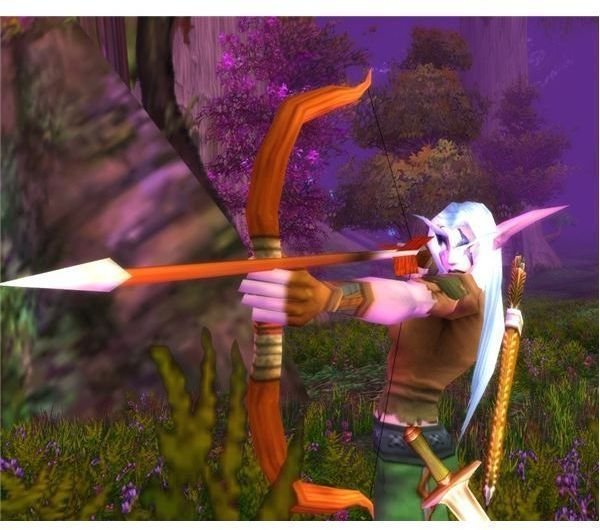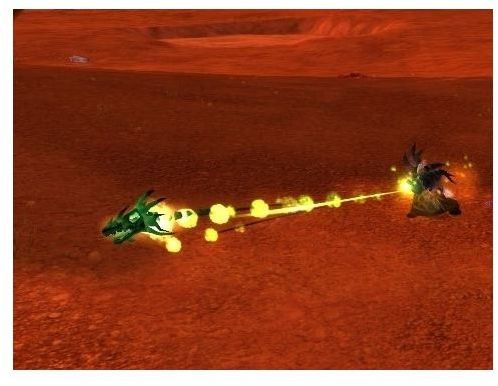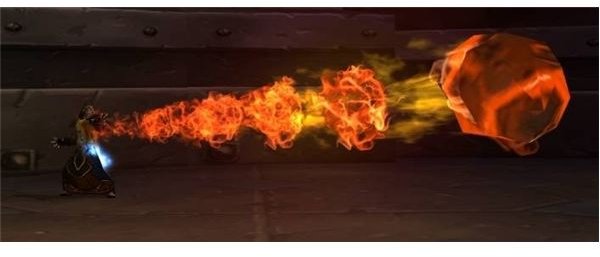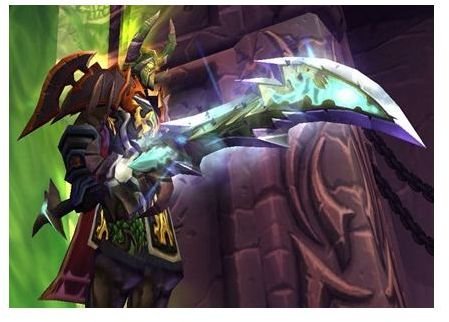Ultimate Guide to World of Warcraft Stats and Attributes - Attack Power, Armor Penetration, and Spellpower Explained

Attack Power
Attack Power is a derivative stat, meaning that most Attack Power is directly derived from Strength or Agility, depending on the class. It is, however, also found as is in high amounts on Leather and Mail armor, as well as “generic” pieces like Rings, Necklaces, Weapons, and Cloaks. Attack Power effects ranged and melee physical damage, and is directly responsible for damage scaling on attacks. Typically, players will prefer the pure stats (Agility and/or Strength) over AP because those stats scale with buffs, like Blessing of Kings. Attack Power is found on red gems.
Armor Penetration
Armor Penetration is a value often found on Leather and Mail gear that gives the player the ability to “pierce” a percentage of the target’s Armor. Armor Penetration Rating converts into Armor Penetration Points at the rate of about 7:1. More important, though, is the amount of Armor Penetration Rating required to ignore 1% of a target’s armor, and that value is 12.31:1. In other words, 12.31 Armor Penetration Rating directly converts into 1% of ignored armor at level 80. Of course, Armor Penetration is only useful for physical damage classes like Rogues, Hunters, DPS Warriors, Death Knights, Paladins, Feral Druids, and Enhancement Shamans. It is less useful for Frost and Unholy Death Knights because much of their damage is magic based, whereas Blood Death Knights need ArP because they’re mostly physical damage. Armor Penetration is found on red gems.
Spellpower
Spellpower is the stat that modifies how much damage or healing any caster’s spells will have. Every ability will take a percentage of a player’s spellpower and modify its ultimate effect by that amount. Spellpower is not derived from any stats, but rather is found in a flat amount on all caster gear and items. This is considered to be the most important stat for all classes that cast spells - Warlocks, Mages, Priests, Holy Paladins, Restoration and Balance Druids, and Restoration and Elemental Shamans. It is hard to say just how much spellpower a level 80 player “needs” because it varies a bit, but 2000 is typically considered “decent” for most classes - but you should always strive for more.
Spell Penetration
Spell Penetration is a weird stat because of how uncommon and situational it is. Most players will never even think about Spell Penetration, and it is argued it’s very limited usage is really only for PvP. Spell Penetration has absolutely nothing to do with Spell Hit Rating, and only applies versus targets with Magic Resistances. As stated, it is mainly a PvP stat designed to negate the effects of resistance buffs like Mark of the Wild, Prayer of Shadow Protection, etc.

Spell Penetration negates spell resistances Point for Point. However, Magic Resistance works on a table, with tiers that determine how much of a spell is resisted. For example, at level 80, 82 spell resistance does absolutely nothing, but 83 negates 15%. This is important information to know when thinking about Spell Penetration. Take Mark of the Wild for example, which gives 54 resistance to all schools of magic. No spell penetration is required versus this buff because it is lower than 83.
On the other hand, Prayer of Shadow Protection grants 130 Shadow Resistance, pushing it well over the limit. On average 15% of the damage from Shadow spells will be resisted. A player would need enough Spell Penetration to push that number below 83 in order to negate this, or, a Spell Penetration of 47. Spell penetration is found on blue gems.
Critical Strike Rating
Critical strike rating increases a players chance to critically hit with melee attacks, spells, and heals. This stat is uniform across all of these - not physical or magic specific. Critical strike rating is found as is on gear, and is also derived from Agility. It takes 46 critical strike rating to equal 1% critical strike chance at level 80. For melee, critical strikes generally deal 200% of normal damage. For casters, they generally deal 150% of normal damage. These percentages can be modified through talents for most classes. Critical strike chance can be countered by Defense or Resilience. You can learn more about crit reduction and crit immunity by reading the Guide to Defensive Stats in World of Warcraft. Critical Strike Rating is found on yellow gems.
Haste Rating
Haste is a complex stat that effectively increases the speed at which spells cast for casters, and increases the swing/shot speed of melee. It also lowers cooldowns, and for casters can bring the global cooldown down to 1 second, from 1.5, though the amount of haste rating required to do this has been calculated at 1639.5, or roughly 50% haste. Any haste that brings your spell casts lower than the global cooldown is generally considered to be a bad thing, because it “clips” the global cooldown (this is usually impossible without trinket procs and Bloodlust/Heroism). It is important to note, though, that haste does not reduce the cast time of abilities. This is a semantic issue. If you were to say that haste reduced the cast time of spell XYZ, then that would mean that 100% = instant cast spell. That is never the case. Spells that have a cast time will never become instant cast, no matter how much haste you have. Let’s take a look at how cast speed is determined with haste:

Cast Speed = Base Casting Time / (1 + (% Spell Haste / 100))
Let’s use this formula with an untalented rank 16 Fireball, a spell that has a 3.5 second base cast time, being cast by a Mage with 15% haste.
First, find % Spell Haste / 100. In this case, .15. Next, add 1 to this number - > 1.15. Now, divide the base casting time by 1.15 to find the new cast speed.
So, 3.5 / (1 + (15 / 100)) = 3.04
So, a 3.5 second cast with 15% haste will cast in 3.04 seconds.
The advantage of haste diminishes as you reach higher amounts, however. In the above example 15% haste reduced the cast time of that spell by .46.
Let’s do the same thing, this time with 30% haste.
3.5 / (1 + (30 / 100)) = 2.69
If stacking additional haste always had an equal effect, then 30% haste would reduce the cast time by .92. However, as you can see, 30% haste only reduced the cast time by .81. In real world application, this is a negligible difference, but when you get into higher and higher haste percentages it starts to make a big difference.
An incredibly high haste percentage would be 60%, so let’s do the math again with this number.
3.5 / (1 + (75 / 100)) = 2.1875 (~2.2). Again, the effect of additional haste is diminished. This represents almost a full half-second difference from the cast speed reduction of 15% haste.
Expertise
Expertise is a melee stat that is very valuable to both tanks and DPS. Having Expertise reduces the chance that your target can dodge or parry your attacks. This is most important when dealing with PvE bosses because of Parry Haste (click the link to learn more), which essentially gives the boss more attacks. While the amount of Expertise required to completely negate a boss’ ability to Parry is absurdly high, having a good chunk of Expertise helps enormously.
At level 80, 8.2 Expertise Rating = 1 Expertise

Let’s take a look at Expertise and Melee DPS briefly. Bosses cannot Parry attacks coming from behind them - they can only Dodge. The amount of Expertise required to ensure that your attacks are never dodged is 26, or 214 Expertise Rating. To maximize DPS it is recommended that melee aim for this number.
Tanks are another story, since they attack from the front and can be both Dodged and Parried. Again, 26 Expertise will eliminate the chance to be dodged, but they will still be Parried (although less than if they had no Expertise). To make it so that a tank is never dodged or parried, they would need to have 54 Expertise, or 460 Expertise Rating. While it is possible to hit this number, a tank must weigh in what they are sacrificing to get there. Health? Armor? Large amounts of Avoidance?
This discussion calls to mind the reason that melee should never, ever, attack from the front. Melee are not going to have 54 Expertise, and if any of their attacks are Parried the Parry Haste the boss gets won’t hurt them, it will hurt the tank - which could even result in tank death, and therefore a wipe.
Hit Rating
Hit Rating allows players to negate the built in “miss chance”, therefore hitting there target 100% of the time (this does not account for Dodge, Block, or Parry). Contrary to formerly-popular belief, there is no 1% built in miss rate that can never be negated. When people speak of the “hit cap”, they are speaking in regards to raid bosses, which are effectively set at level 83 as regards their combat stat scaling. Talents, buffs, and consumables can reduce the amount of hit chance one has to come up with through gear, ie: Heroic Presence, Worg Tartare, etc.
The amount of hit rating required to reach the hit cap is different depending on whether you’re dual wielding, single-wielding, or casting spells.
For single-wielders (aka 2-handed weapons) the hit cap is 8%. This goes for hunters as well.
For duel-wielders (ie: Rogues, Fury Warriors) the hit cap is 27% with auto-attacks and 8% for special abilities, regardless of whether the special uses your main hand only or both (ie: Mutilate, Threat of Thessarian).
For spell casters, the hit cap is 17% for all spells, all the time (obviously healers don’t need hit rating to land heals). This has nothing to do with a player or mob’s magic resistance, which is negated with Spell Penetration (see page 1 of this article).
This post is part of the series: Ultimate Guide to Stats and Attributes in World of Warcraft
A discussion of all of the different stats and attributes found in the game World of Warcraft. We look at how core stats like Agility relate to Attack Power, how Magic Resistance really works, just how much Defense a tank needs, and so much more.
- Stats and Attributes in World of Warcraft - Explanations and Analysis
- Ultimate Guide to Stats and Attributes in World of Warcraft - Offensive Stats Breakdown
- Ultimate Guide to Stats and Attributes in World of Warcraft - Defensive Stat Breakdown
- World of Warcraft Cataclysm Stats and Attributes Changes
